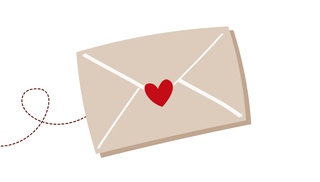
Photo Book Inspiration
Make your own coffee table book
If you’ve ever browsed an interior design magazine, coffee table books are a final touch that’s likely to have caught your eye. These glossy hardbacks are designed to get people’s attention with their quality, impactful images. They look beautiful, add style and make a statement about the person putting it on display.
Finding the right one for your room isn’t easy though. If you’ve been shopping around with no joy, creating your own coffee table book is a more personal alternative and worthwhile investment. Here are some tips to make a personalised photo book that ticks all your boxes.
Jump to:
What is a coffee table book?
Why make a coffee table book?
How to make a coffee table book
How to display your coffee table book
What is a coffee table book?
A coffee table book is a large visual-focused hardback that’s displayed on a table or other surface in someone’s home. Full of beautiful imagery that tells a story or has a creative link, they’re designed to be browsed and enjoyed casually. They can be picked up and put down, used to pass the time or as a conversation starter.
First made popular in the 1960s, people have returned to coffee table books as a reflection of their interests, personalities and style. They’re useful accessories to refresh a room’s interior design, make a statement or add a touch of luxury to a room.
Although coffee table books are exclusively made up of photography, art or other imagery (with little text), the subjects they cover are vast and include:
- Art and photography
- Nature and wildlife
- Adventure and travel
- Culture such as music and design
- Food and recipes
- Fashion and entertainment
- History, philosophy or politics
This means, before you make a coffee table book, you should think about the topic you want to focus on, from photos of a special holiday to a professional portfolio or memories with a particular loved one.
Why make a coffee table book?
Making your own coffee table book is a fulfilling creative project. Thinking about the purpose behind your new creation will help the final print be more focused and engaging. So, before you select a single image, consider why you want to create your visual hardback.
Match your interior style
Just like your cushions, throws and other pieces of wall art, your coffee table books are an interior accessory that complements the style of your room. The colour schemes, textures and shapes you’ve chosen for your furniture, curtains and ornaments should be reflected in your final book.
That way, when you make your own coffee table photo book, you create the perfect finishing touch to your living space.
Showcase your personality
Your hobbies, values and creativity are part of who you are. Coffee table books are great ways of expressing them all. Whether it’s a particular icon in your life, an area of culture (like art, architecture or celebrity life) you love or special memories you want to share, they can all be captured beautifully and shown off in a high quality photobook you’ve made yourself.
Create a treasured gift
What better way to congratulate a loved one on buying their new home than giving them the perfect finishing touch? Unusual, thoughtful and deeply personal, create a coffee table book that matches their style and is full of photos of your special memories together. A leather photo album inside a beautiful presentation box will make a unique gift and stunning addition to their living space.
How to make a coffee table book
Making a coffee table book should be an enjoyable and fun creative process. To get a quality final product you’re happy with, it’s worth taking your time to plan, gather images and design it. Below is our step-by-step guide.
Plan out your book
Thinking about why you’re creating your coffee table book should always be your starting point. Do you want it to reflect the style of your living space or share a particular interest? Are you aiming to create a travel photo album that tells the story of an adventure abroad? Figuring out your purpose will give your coffee table book a direction. This will help you make choices about the images and design.
Keeping the final audience in mind will also help. Even if you’re creating the coffee table book for yourself, think about the style and story you want to reflect and tell. Are you making a book for a friend who loves a particular artist? Or maybe a family member who is interested in architecture? This will all influence the way you structure your book.
Each coffee table book should write a narrative with imagery using as few words as possible. Asking these questions up front will help you draw out your initial layout ideas on paper or using the CEWE Creator Software.
Collect your images
Once you’ve got a plan together, you can start to gather the images you want in your coffee table book. Start by putting all your potential choices into one folder. Then, start the selection process. When you’re running through the photos, keep the following in mind:
- Look for a variety of perspectives and shot types e.g. a mix of landscapes and detailed close-ups
- Coffee table books are all about quality, so the images you choose need to be high-resolution enough for printing. Generally, 300 DPI is the minimum resolution recommended, although this may be higher for larger images. The Creator Software will indicate if your photos’ resolution is not high enough, once you add them to a page in your design.
- Try to create a flow with your imagery. Put your choices in order and flick through them several times to see if there are any images that seem out of place
Once you’ve got the final selection of images, you might want to edit them to create a consistent look. Contrast, colour balance and exposure can all be tweaked to bring out similar themes or elements in the photos and help tell the narrative effectively.
Think about formatting
Typically, coffee table books are large, hardback and high-quality prints. These formats set off your images at their best and present them ready to be admired by any visitor. Plus, you can adapt these formatting rules to suit your own style and narrative.
For example, a large photo book (near A4) or any of our extra-large photo books are best for giving your photos enough room to breathe. They’re also available in square, landscape and portrait orientations, meaning you can choose a shape that best suits your design. Portrait photo albums might be best for family photos, landscape is great for nature or wildlife images and square is ideal for playful designs with multiple images.
Larger sizes help people see the details of your images. Choosing the right paper type is also important. There are a variety of options, including:
- Classic and Recycled papers is great, versatile all rounders, meaning they can show up a high level of detail and bring out the colour intensity of your photos
- True Matte Paper has a crisp, artistic feel which is ideal for monochrome photos. It reflects less light and shows off the finer details of architecture and travel photography
- High Gloss Paper gives your coffee table book a magazine-like feel. Ideal for outdoor or travel photos, this paper will bring out all the colour vibrance of your images
- Photographic papers are our thick, premium option also available in classic, gloss and matte finishes but showing an extremely high level of detail and colour intensity
The way your pages are bound will also affect their final look. Layflat binding gives you maximum design flexibility, as you can run images across a double page spread without affecting their composition. This is particularly important for landscape shots and panoramas and means you can always show your photos off at their best.
Start your design
Coffee book tables are all about the ‘wow’ factor. The main aim is to let your images do the talking. Take plenty of time to work on the design and get the narrative right using the following tips:
- White or negative space can create an effective ‘frame’ for your image and help details stand out. It can also stop your book design from feeling too crowded
- If you use multi-photo layouts, make sure the images look consistent and flow together, otherwise they could feel out of place
- Don’t be afraid to give images plenty of space. A striking photo can take up a whole page or two without feeling out of place
- Use text sparingly when you need some extra help telling your images’ story. Be consistent with the typography you choose and don’t let the words overwhelm your pages. Plus, make sure you proof any words for mistakes before you go to print
- Put extra effort into the cover, as this will catch people’s attention first. From the image you choose to the title you write, it should reflect the style and personality you’re aiming for
Starting with a blank page can be daunting. With the CEWE Creator Software, it’s easy to create professional quality, personalised photo books. Simply drop in your images and you can choose from a range of layouts and effects.
This includes cover finishes like Highlights. Available in silver, gold, rose gold or gloss, they are metallic accents that make details stand out and give your book an extra-luxurious touch. Once you’ve completed your design, you can send it straight to print from your software. So you know you’re getting the quality finish you want.
How to display your coffee table book
Now you’ve created your coffee table book, it’s time to show it off in your living space. Instagram, Pinterest and interior design blogs have plenty of ideas. Or you can try out the tips below to get you started:
- Make a feature out of your book by placing it next to other ornaments and knick-knacks like a vase, a candle or an indoor plant. You can mix and match the items and where they’re placed with the seasons or your mood
- If you don’t have a table, you can place your book on an Ottoman or pouffe for a more casual look. It also makes it easier for visitors to settle in on your sofa and pick up the book for browse
- Take multiple books and stack them on top of each other. Monochrome books are stylish together or create a pile of different colours for a brighter look. Place your largest book on the bottom and complete the stack with the smallest on top for balance
- If you don’t want a stack on your table, place the books in a wire basket, on a serving tray, or put them in a magazine rack or on a bookshelf. Just make sure they can still be seen, picked up and flicked through easily
By trying and testing different options, you can find a style that suits you and shows off your quality coffee book at its best.
Want further inspiration to make your own coffee table book? Then head to CEWE Community to get ideas from other creators.













